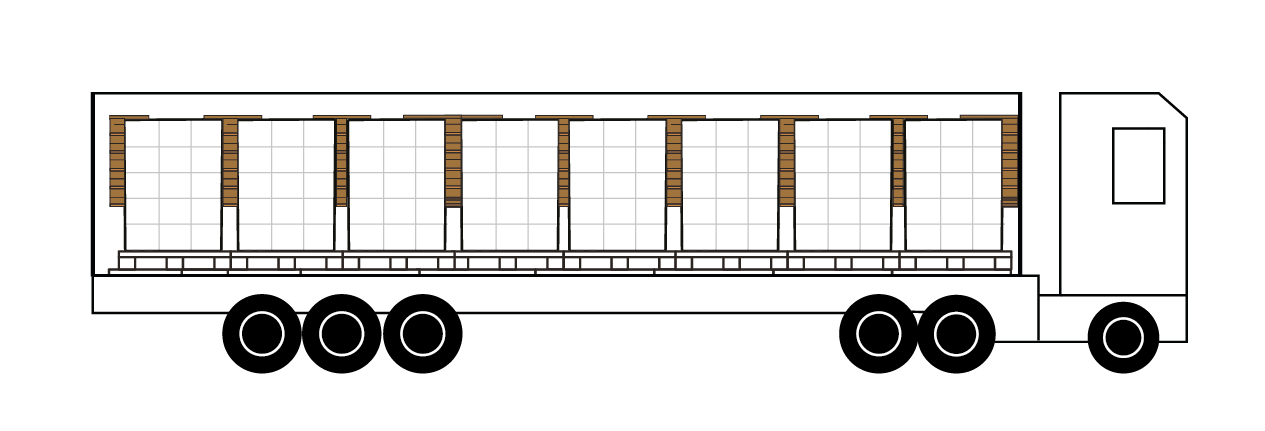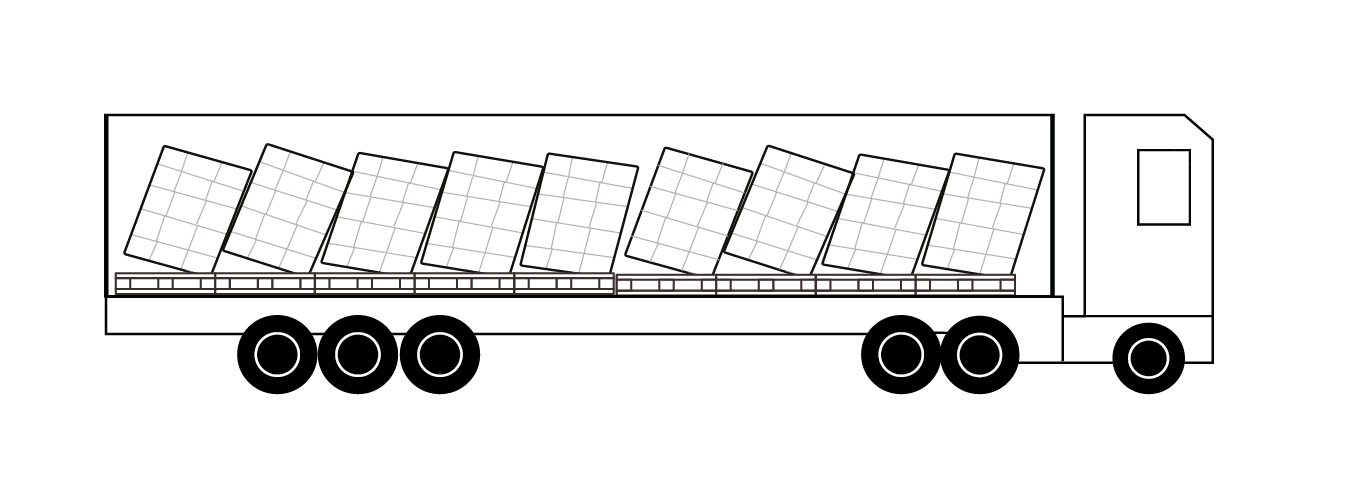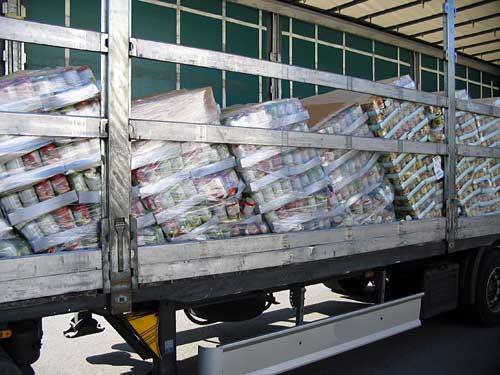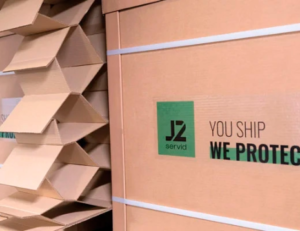When we talk about the domino effect in freight transportation we refer to the situation where one commodity falls and triggers a chain of events that results in the fall of other nearby commodities. This can happen at different stages of transportation, either during the loading and unloading of the products on the trucks or during unloading at the destination, although it is very common during the transportation itself.
When a commodity falls, it can hit other nearby commodities, causing them to fall.

Understanding the ripple effect in freight transportation: how a small impact can have massive repercussions
The domino effect in freight transport is a clear example of how a small impact can have massive repercussions in the logistics chain. As mentioned above, a single fall can affect multiple nearby goods, or even the entire batch of goods being transported.
In some cases, the failure of a single commodity can cause a chain reaction that affects several areas of the supply chain. For example, if one good falls and causes damage to another good, it may be necessary to replace both products, resulting in additional costs and delay in delivery.

Therefore, in addition to physical damage to the goods, this can cause delays in delivery, loss of products and additional costs for the companies involved.
How to prevent a failure from wreaking havoc on the entire logistics chain
To prevent a drop of goods from wreaking havoc throughout the logistics chain, it is essential to take preventive and safety measures at every stage of the transport process. This includes ensuring that goods are properly packed and secured in transport vehicles, using proper stowage systems to prevent movement, and ensuring that drivers and employees are trained in safe loading and unloading techniques.
In addition, it is important to have constant supervision and regular inspections of the cargoes during transport. This will make it possible to detect and address any potential problems or risks before they become disasters. It is also beneficial to have a contingency plan in case of a fall or accident during transport to minimize the impact on the logistics chain.

Niupack offers a variety of products designed to prevent this:
- Niupack Top, ideal for truck transport and especially for the consumer goods sector, when the goods do not occupy the entire perimeter of the pallet.
- Niupack Large, useful for covering large gaps and as a more sustainable alternative to inflatable bags. Very useful for sea container.
- Niupack Panel is the rigid, non-folding model, and is ideal for stabilizing pallets that have been stacked.
- Niupack Block, ideal for separating and stabilizing overturned loads and for separating irregular goods.
Consult all our models and choose the one that best suits your needs.
The danger of the domino effect in freight transportation: consequences and solutions
To minimize these risks, it is important to implement solutions that help prevent accidents and react effectively if they occur. This may include, in addition to methods designed to protect the goods from each other, such as those discussed above, the use of appropriate stowage and lashing systems, the use of safety equipment such as straps and restraint nets, and ongoing training of drivers and employees involved in the loading and unloading of goods.
In addition, it is important to have adequate cargo insurance can provide an additional layer of protection in the event of an accident or falling cargo. This will help mitigate the costs and damages associated with such events and ensure an effective response to minimize the impact on the logistics chain.
Ultimately, the domino effect in freight transport can have disastrous consequences for the logistics chain. That is why it is important to avoid it by implementing preventive measures, taking safety precautions and having an effective contingency plan to minimize risks and ensure the success of the transportation of goods. Safety and care at every stage of transport are essential to prevent a simple fall from wreaking havoc throughout the logistics chain.









